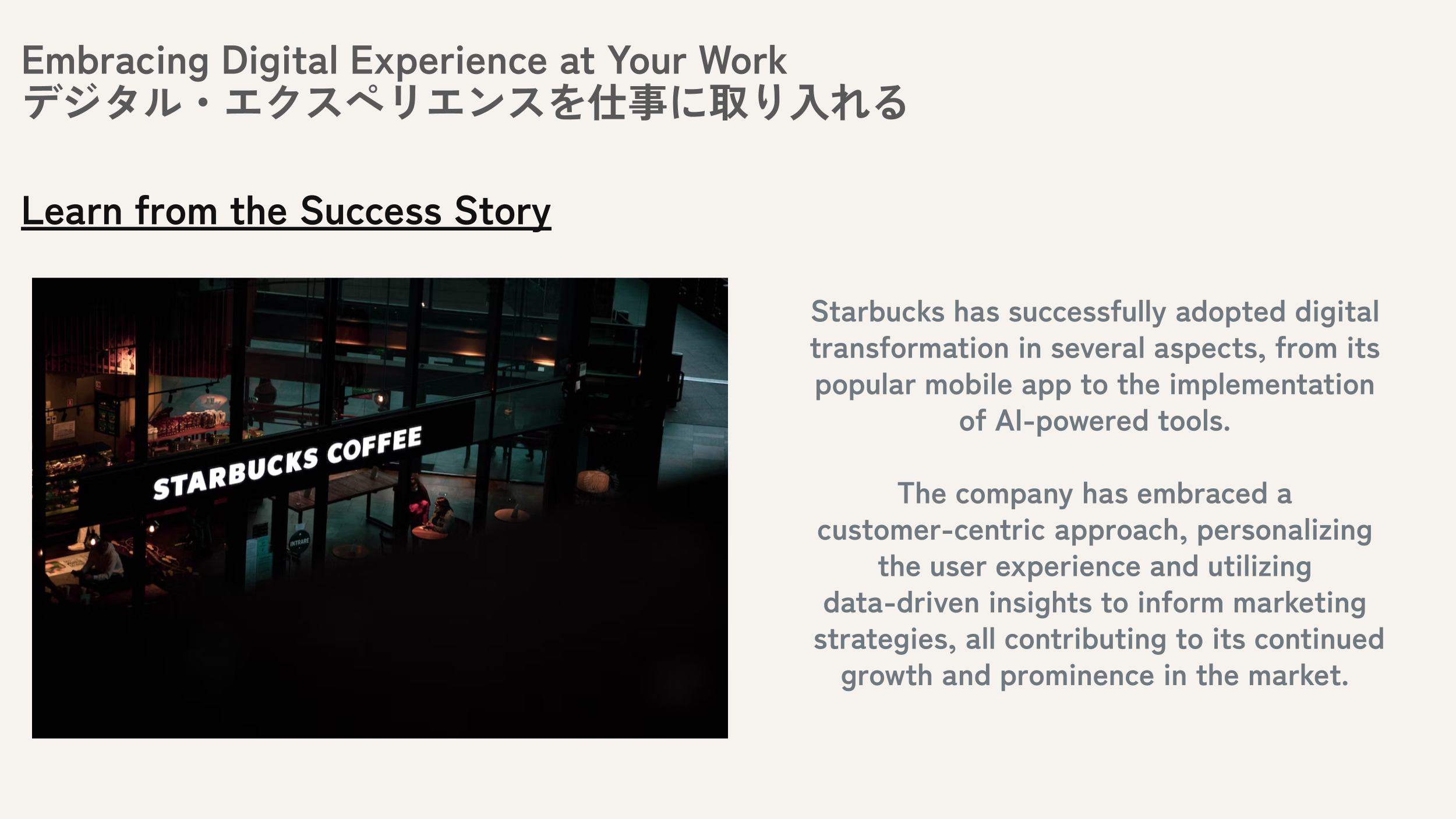Introduction
The digital wave is sweeping across all industries with a transformative force, casting away the traditional, inviting the new, and redefining the dynamics of customer engagement.
One critical component reshaped by this tech-driven revolution is the 'Digital Experience'.
Digital Experience, an umbrella term encapsulating every digital interaction a customer has with a business, is more than just a new buzzword.
As we transit into a more connected, digital-first world, providing an enriched, seamless DX is now the linchpin of successful customer engagement and brand differentiation.
In this blog post, we step into the exciting realm of DX, exploring what it means, why it matters, and how digital transformation is revolutionizing it.
What Is Digital Experience?
The Digital Experience is a broad concept that encompasses all the different types of interactions a customer can have with a business via digital platforms.
It includes—but is not limited to—visiting a company's website, interacting with a mobile app, receiving a marketing email, or engaging on social media platforms.
`Each one of these touchpoints forms an integral part of the customer's digital journey and collectively shapes the overall DX.
A successful DX is characterized by its effortless, engaging, and personalized nature. It is intuitively designed and catered to the consumers' needs, offering a seamless digital journey that begets satisfaction and loyalty.
Why Does Digital Experience Matter?
The importance of DX cannot be stressed enough. In an increasingly digital climate, a customer's digital journey with a brand often plays a pivotal role in influencing their overall perception, purchase decisions, and ultimately, their loyalty.
Businesses that offer an exceptional DX have a distinct competitive edge— they not only attract and retain more customers but also enhance their brand perception and drive higher revenue growth.
Conversely, a poor DX can lead to frustrated customers, tarnish a brand's reputation, and result in opportunities lost to competitors.
#1 The Significant Impact of Digital Experience
Now let's delve into why DX holds so much weight. The primary factor revolves around its direct impact on a business’s bottom line.
Gaps in the digital experience are estimated to result in an 8% loss in revenue on average.
The significance is even more pronounced in industries like automotive and healthcare where revenue loss due to unsatisfying DX climbs up to 18% and 14%, respectively.
There's no understating the importance of a smooth digital journey. A well-crafted digital experience not only drives conversions but also helps in retaining existing customers, fostering brand loyalty and building a strong brand reputation.
#2 Digital Experience Influences Perceptions and Loyalty
Every digital interaction a user has with a brand shapes their perception of it.
Ensuring each of these touchpoints harmonizes to deliver a cohesive, enjoyable experience is critical in winning their trust and loyalty.
A second annual digital experience consumer survey revealed that although DX is steadily improving across sectors, there's still ample room for betterment as consumers are online less frequently and are more discerning with their digital interactions than ever.
#3 The Age of Customer Expectations
Today's digitally-empowered customers demand personalized, immediate, and seamless experiences across all digital channels.
These high expectations necessitate that businesses continually strive to improve and innovate their digital experiences to stay competitive.
Root out friction in every digital experience, super-charge conversion rates, and optimize digital self-service.
Uncover insights from any interaction, deliver AI-powered agent coaching, and reduce cost to serve. Increase revenue and loyalty with real-time insights and recommendations delivered straight to teams on the ground.
Components of Digital Experience (DX)
Understanding the concept of Digital Experience (DX) necessitates an examination not just of its overall significance but also its composite parts.
At its core, DX involves multiple elements, each playing a pivotal role in shaping the overall digital interactions a user has with a brand.
Let's explore these components in greater detail.
1. User Interface (UI)
The user interface includes the visual elements through which users interact with a digital platform.
It includes everything from the layout and design aesthetics to the navigation menus and buttons.
A well-designed UI should be intuitive, efficient, and visually appealing. It plays a crucial role in shaping first impressions and guiding the user through the digital journey seamlessly.
2. User Experience (UX)
UX refers to the overall experience that a user has when interacting with a digital platform.
While closely linked to UI, UX goes beyond mere visuals to include aspects like usability, performance, functionality, and overall utility.
A good UX design should prioritize the users' needs and aims to make their digital journey as efficient, enjoyable, and frictionless as possible.
3. Content
Content is a cornerstone of DX. From product descriptions and blog posts to social media updates and email newsletters, content delivers the brand message, engages users, and drives them towards desired actions.
In the context of DX, content should be relevant, informative, engaging, and personalized to the user's needs and preferences.
4. Personalization
Personalization involves creating tailored digital experiences that factor in the user’s preferences, behavior, past interactions, and other pertinent details.
According to Epsilon research, "80% of consumers are more likely to make a purchase when brands offer personalized experiences.”
It's a powerful way to enhance the relevance of the DX, making users feel valued and understood, thereby driving engagement and conversions.
5. Omnichannel Consistency
Today’s consumers interact with brands through multiple digital channels ‒ from websites and mobile apps to social media platforms and email.
Omnichannel consistency ensures that users see the same information, receive the same level of customer service, and have the same quality of user experience across all platforms and touchpoints.
Ensuring a seamless, consistent experience across all these touchpoints is a crucial component of DX.
6. Performance
Performance refers to the technical aspects of DX, such as site load times, app responsiveness, and uptime.
A digital platform that's slow, unresponsive, or frequently down can drastically hinder DX, prompting users to switch to competitors.
Google notes, "As page load time goes from 1s to 3s, the probability of bounce increases 32%.”

7. Accessibility
Digital experiences should be accessible to all users, including those with disabilities.
This includes ensuring that digital platforms are compatible with assistive technologies, using alt text for images, offering transcripts for audio content, etc.
Accessibility is not just a legal mandate but also a way to ensure that the brand is inclusive and caters to a wider audience.
8. Security and Privacy
With data breaches and privacy concerns increasingly becoming front-page news, prioritizing security and privacy is a critical aspect of DX.
This includes safeguarding user data, respecting user privacy, and being transparent about data collection and usage practices.
Potential Challenges of Digital Transformation in Digital Experience
Creating exceptional Digital Experiences (DX) carries a unique set of challenges.
These are intricate and multifaceted, often involving technological, organizational, and customer-related hurdles.
However, by understanding these challenges – and identifying effective strategies to overcome them – organizations can successfully enhance their DX.
In this section, we delve into these challenges in detail and provide potential solutions.
1. Understanding User Behavior
Challenge:
Recognizing user behavior, needs, and evolving expectations is among the most pressing challenges in DX.
Users' preferences can change rapidly, complicating the task of creating experiences that resonate with them.
Solution:
Organizations can leverage advanced analytics and AI-powered tools to scrutinize user behavior, derive insights from engagement metrics, and tailor experiences accordingly.
Regular surveys and feedback solicitation can also offer valuables insights into user expectations and what improvements need to be made.
2. Achieving Personalization at Scale
Challenge:
Delivering tailored experiences to each user is expected, but can be immensely challenging, especially at scale.
Many businesses struggle with developing and implementing a personalization strategy that feels genuinely individualized.
Solution:
Investments in machine learning and AI technologies can allow organizations to automate personalization at scale, delivering experiences that are genuinely unique to each user.
Behavioral data can drive these personalization, enhancing the relevance and appeal of the digital experience.

3. Ensuring Omnichannel Consistency
Challenge:
Users today interact with brands across a multitude of channels – websites, apps, social media, and more.
Ensuring a consistent, seamless experience across these channels can be a significant challenge.
Solution:
Adopting an omnichannel strategy is a key solution here. Cross-functional cooperation within the organization, coupled with the integration of technological platforms and software can streamline experiences across channels, maintaining a consistent brand identity and user experience.
4. Maintaining Data Privacy and Security
Challenge:
In an age of data breaches, maintaining user data confidentiality and security becomes a prime concern, not to mention compliance with a growing body of privacy regulation.
Solution:
Robust measures such as data encryption, secure user authentication, regular security audits, and transparent privacy policies are critical.
It's also vital to stay updated on changing data protection regulations and implement necessary changes to maintain compliance.
According to Cisco’s 2020 Consumer Privacy Survey, "32% of the respondents stated that privacy is a buying factor, and 78% said they care about how their data is handled.”
5. Dealing with Technological Constraints
Challenge:
Outdated, slow, or unstable technology can severely hinder DX efforts, impact user satisfaction, and deter business growth.
Solution:
Investing in modern, efficient, and reliable technology platforms is a necessity, not a luxury.
Businesses should regularly assess their tech infrastructure and make necessary upgrades or replacements to ensure they can deliver a high-quality DX.
Employing cloud technologies can also enable scalability and high availability.
6. Overcoming Organizational Silos
Challenge:
DX requires cross-functional collaboration. However, many organizations are siloed, with different departments having little synergy or shared efforts.
Solution:
Adopting a culture of transparency and collaboration is essential. Regular inter-departmental meetings, collaborative projects, and a shared vision of DX goals can help break down these silos and foster cross-functional collaboration that drives DX improvements.
7. Keeping Pace with Digital Innovation
Challenge:
The rapid pace of digital transformation can be overwhelming for some organizations, making it difficult to keep up-to-date with the latest trends, technologies, and best practices in DX.
Solution:
Implementing ongoing training programs, attending industry conferences, subscribing to industry publications, and partnering with digital experts or agencies can help businesses stay abreast of the latest DX trends and innovations.
Conclusion
Digital transformation holds immense potential to unlock a superior and more impactful DX, going beyond mere functionality to delivering delight.
As we move forward, businesses must strategically leverage these transformative technologies, constantly putting their customers at the center of their DX design, and foster experiences that are not just streamlined and efficient, but also memorable and satisfying.
After all, in the digital age, customer experience is not just the biggest battleground for competition, it's also the key to winning it.
Embrace the digital revolution, and let's collectively script the future of DX.








